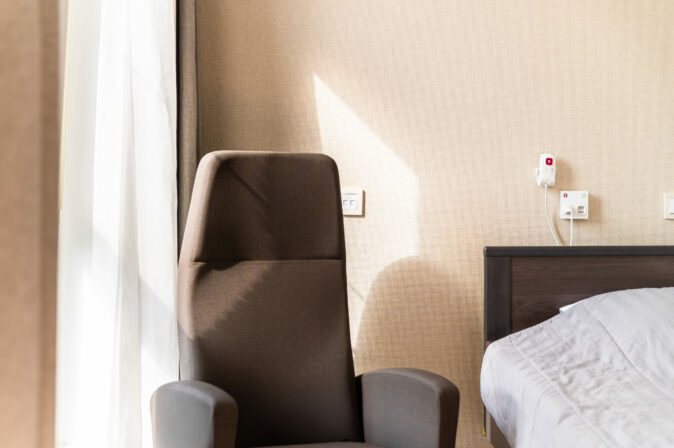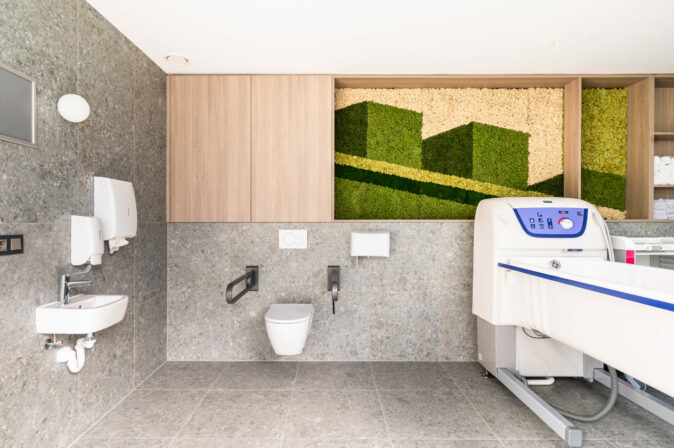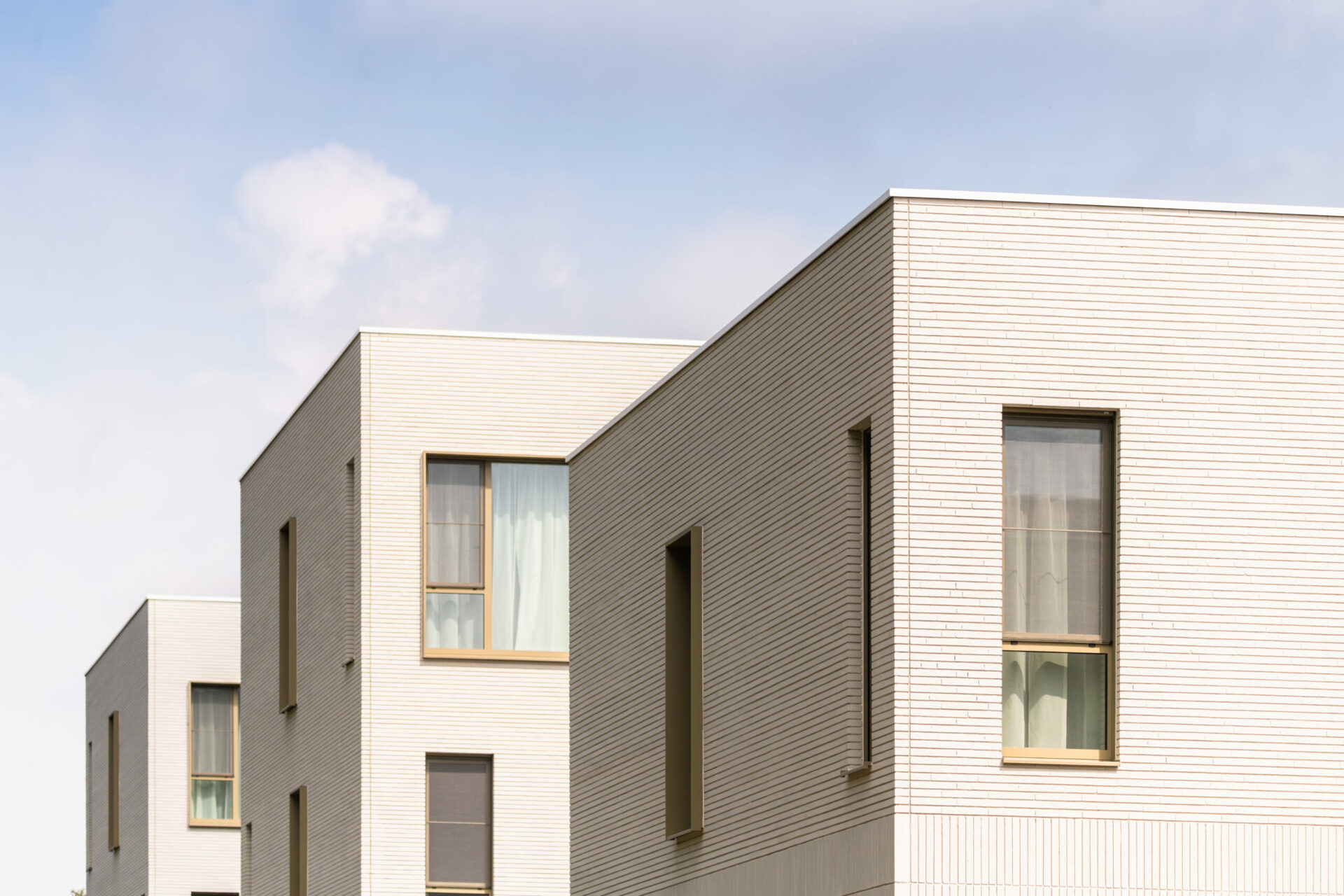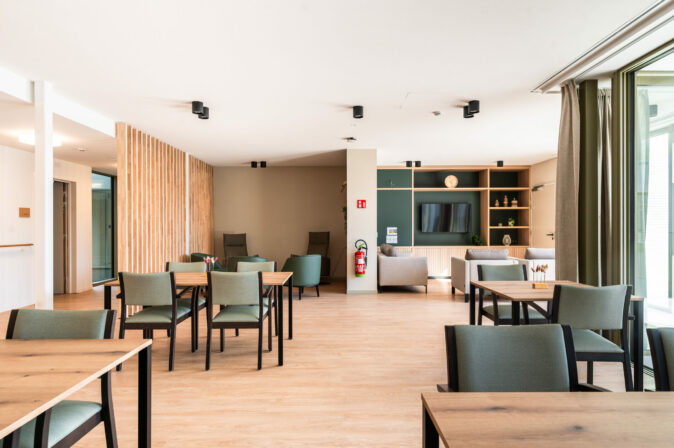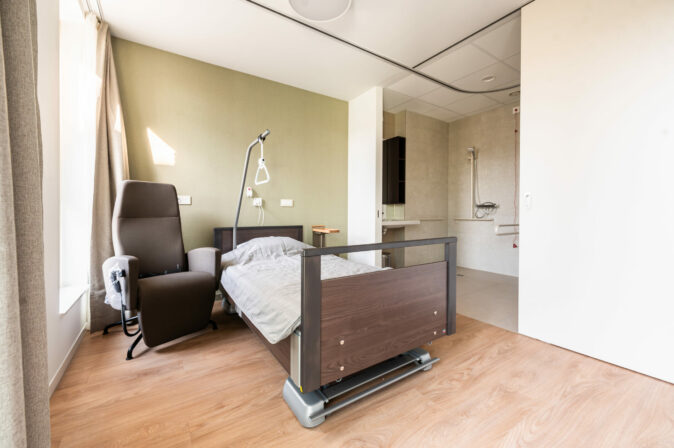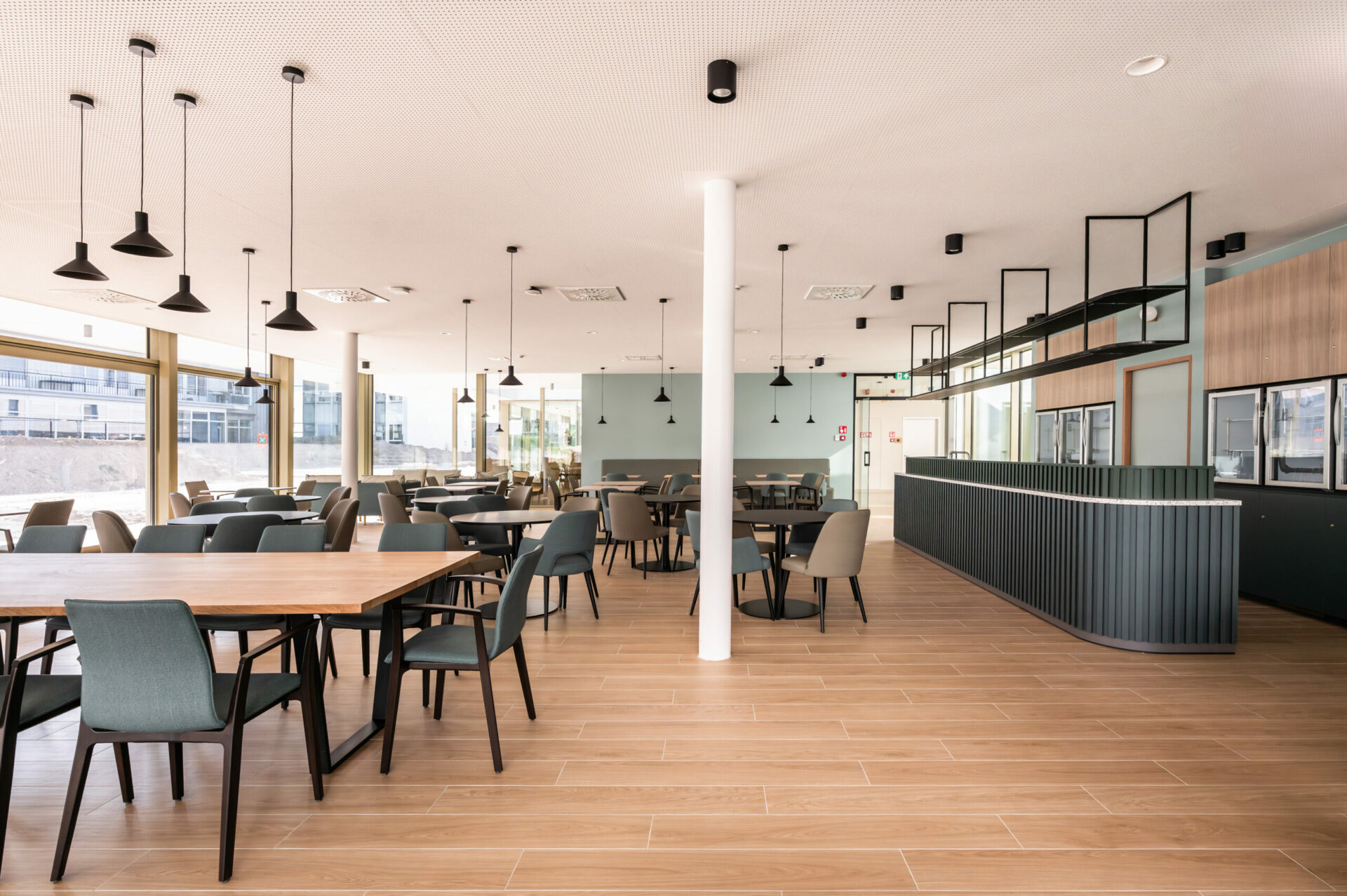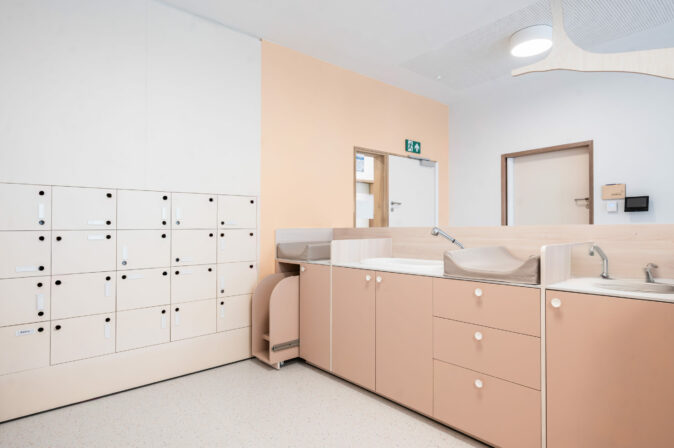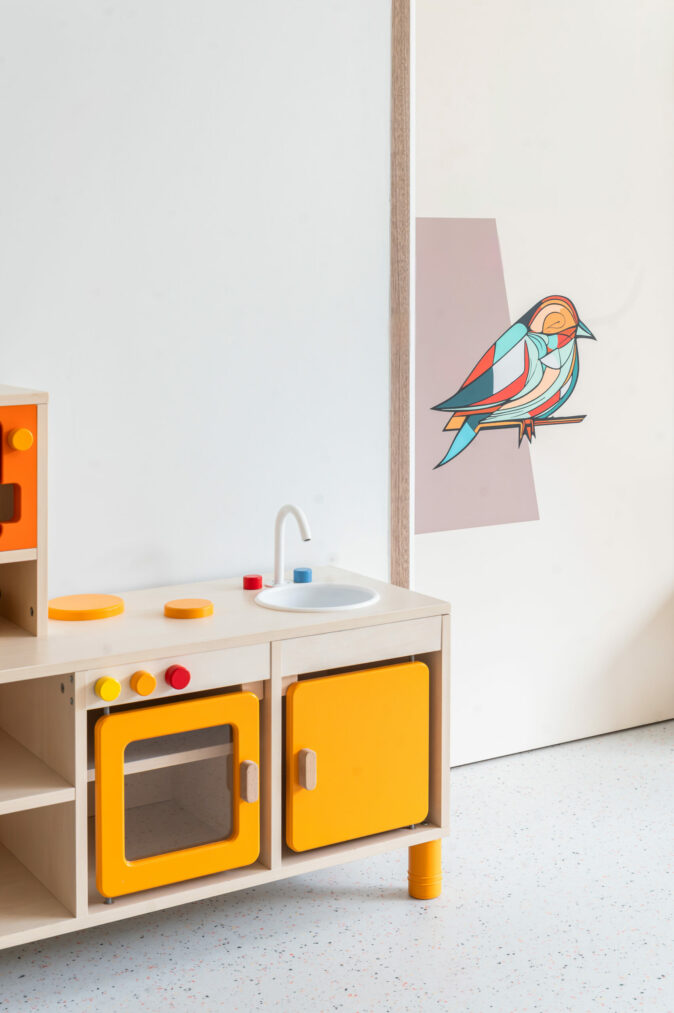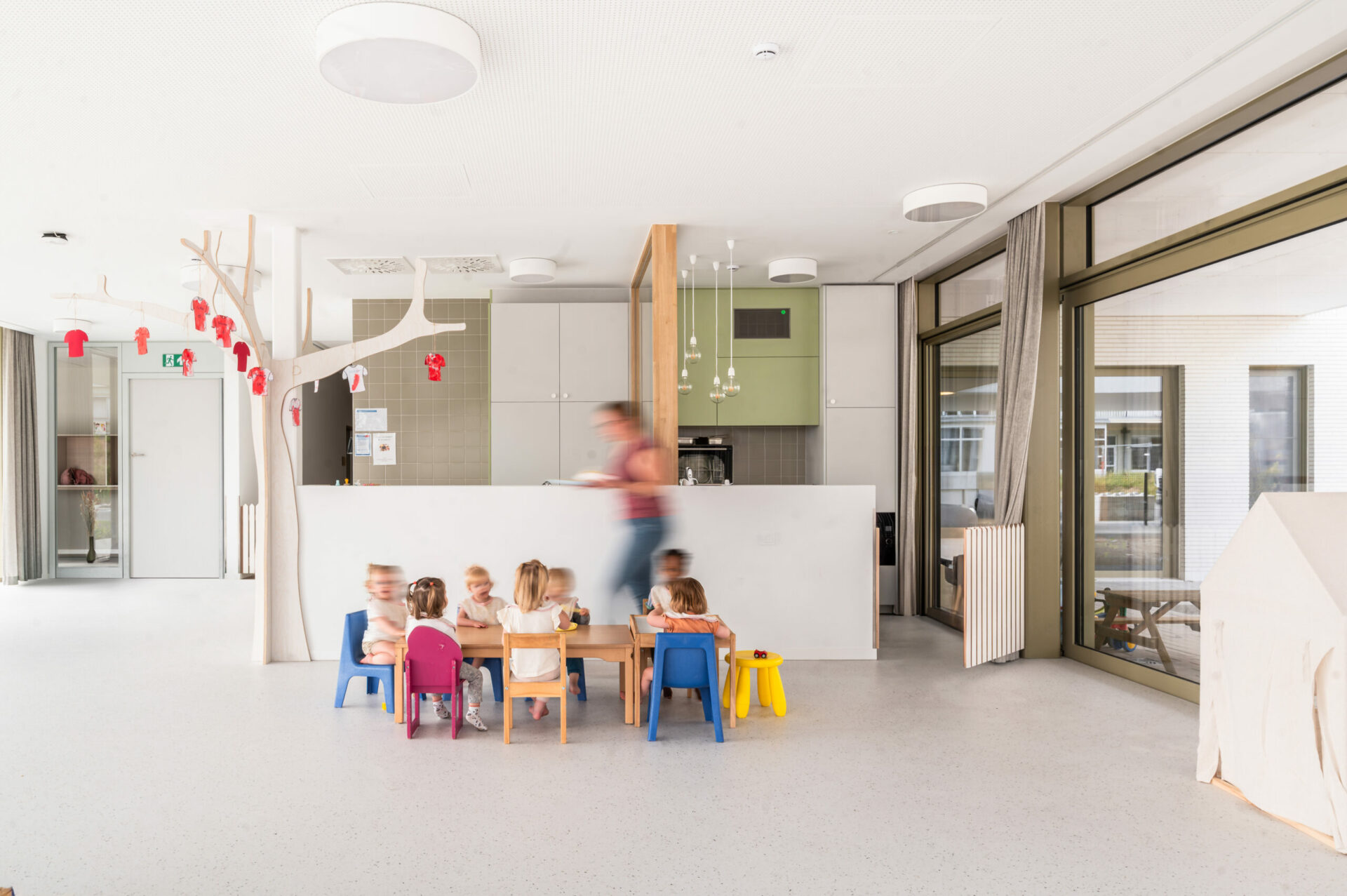campus for small-scale domestic-oriented care
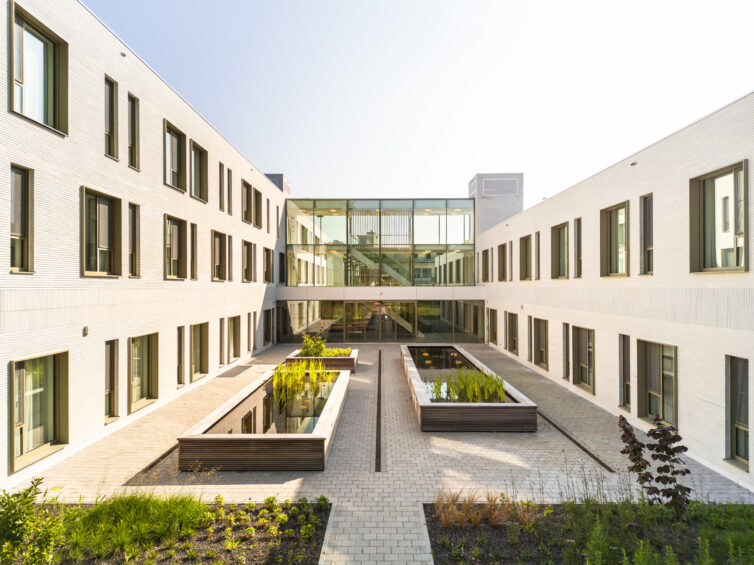
campus for small-scale domestic-oriented care

The Sint-Jozef nursing home (now ‘t Huis) had long been part of the healthcare landscape in Kortrijk, but its best days were far behind. Dating back to 1966, the building no longer met fire safety standards or room size regulations. Architecturally, the complex had also deteriorated over the years, notably due to peculiar mirrored glass extensions meant to provide each room with its own sanitary facilities. Since renovation would offer little improvement, the OCMW of Kortrijk (now Zorg Kortrijk) decided to completely reorganize its campus based on a master plan. To this end, they launched a design competition in 2014, which was won by assar.
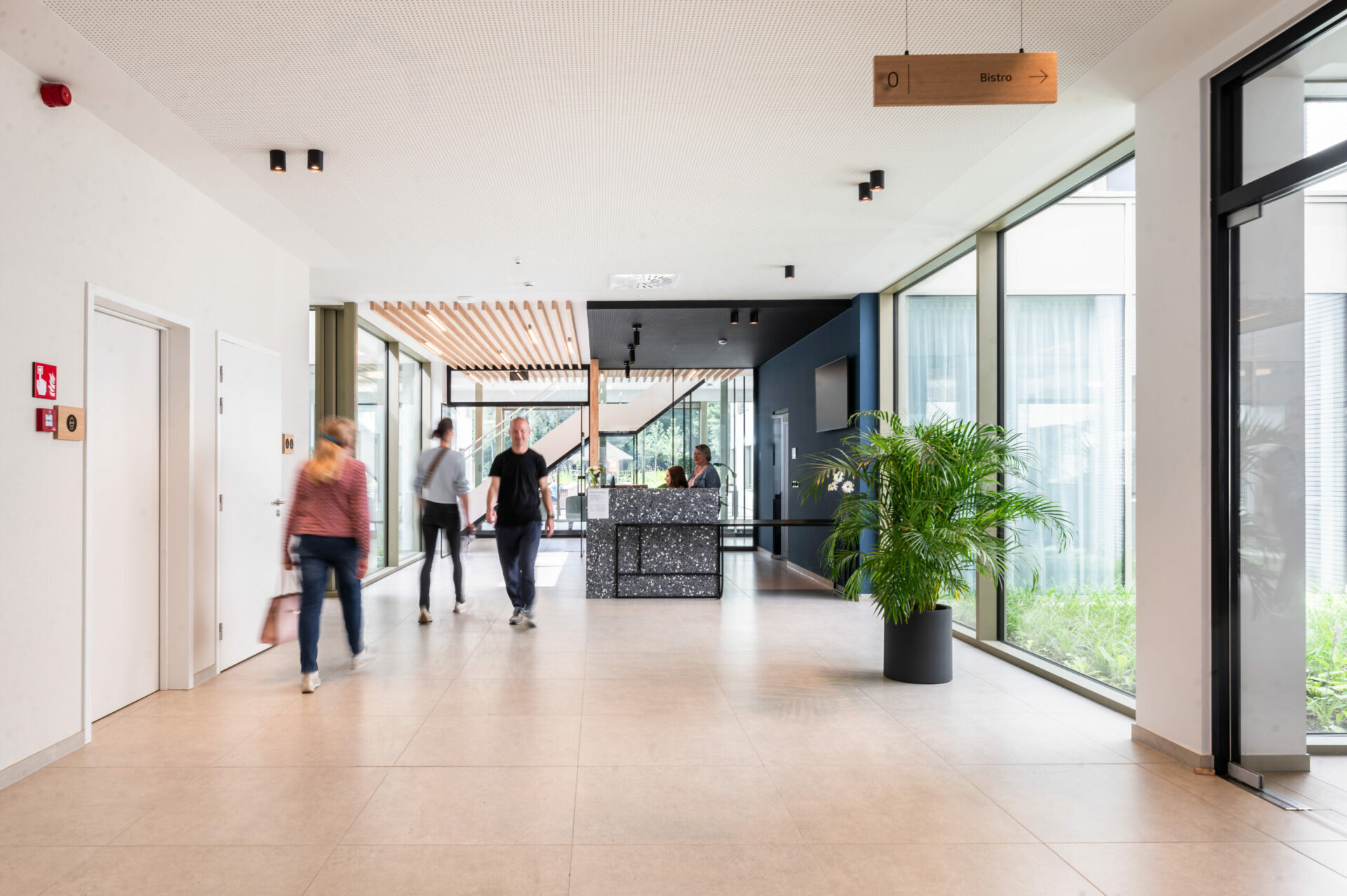
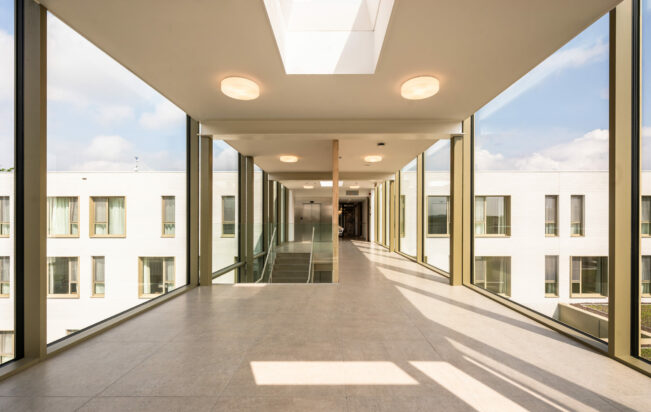
| program | the 't Huis project in Kortrijk includes the development of a master plan for the entire campus & the architectural design of a new replacement building for 135 residents, a local service center, a daycare & a nursery. assar also assisted the client in guiding & obtaining VIPA subsidies |
| client | Zorg Kortrijk (formerly OCMW) |
| address | Condédreef 16 • 8500 Kortrijk |
| building type | care • live |
| status | completed |
| expertises | architectureinterior architecturelandscape designbimurban design & planningproject management |
| offices | brussels |
| size | basement: 3,150 sqm · above ground: 8,975 sqm |
| team | • client: Zorg Kortrijk (formerly OCMW) • architect: assar architects • interior architect: assar architects • landscape architect: Omgeving • structural engineering: BM Engineering • fluid engineering: BM Engineering . • energy performance certificate (EPC): Kubiek • contractor: TM Stadsbader . EEG |
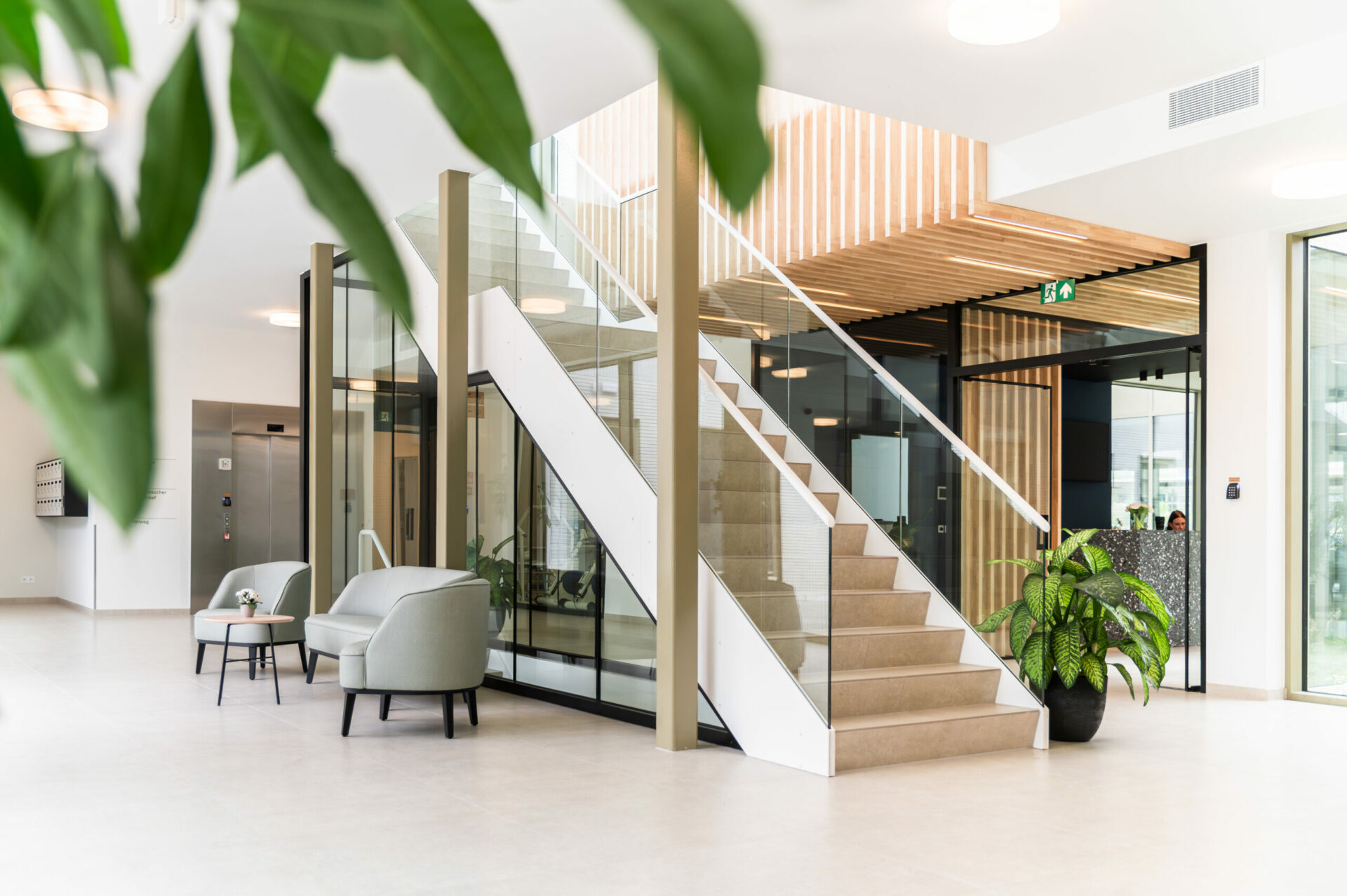
In consultation with the neighborhood, maximum efforts were made to:
To avoid a stark contrast with the surrounding buildings, the height of the new building was deliberately limited to two stories next to neighboring houses and three stories next to the school buildings.
The new care campus was positioned at the back of the site, preserving the existing trees and minimizing the demolition of the existing building.
Heavy traffic will pass through the existing central driveway on Condédreef and will be directed as much as possible to the right side of the plot. The goal is to preserve as large a green space as possible in front of the building, which will be developed into a park with horticultural areas and a new playground. The green space behind the new building, which will be primarily used by the nursing home residents, will have a more private character. The open spaces between the rear wings of the buildings will open onto this private garden but can also be enclosed.
At the front of the building, a promenade along the entire length will provide access to the various functions: the daycare, the residential care center, the neighborhood team, and the daycare. This will create activity in and around the meeting square. The nursing home itself is located behind and above these more public areas.
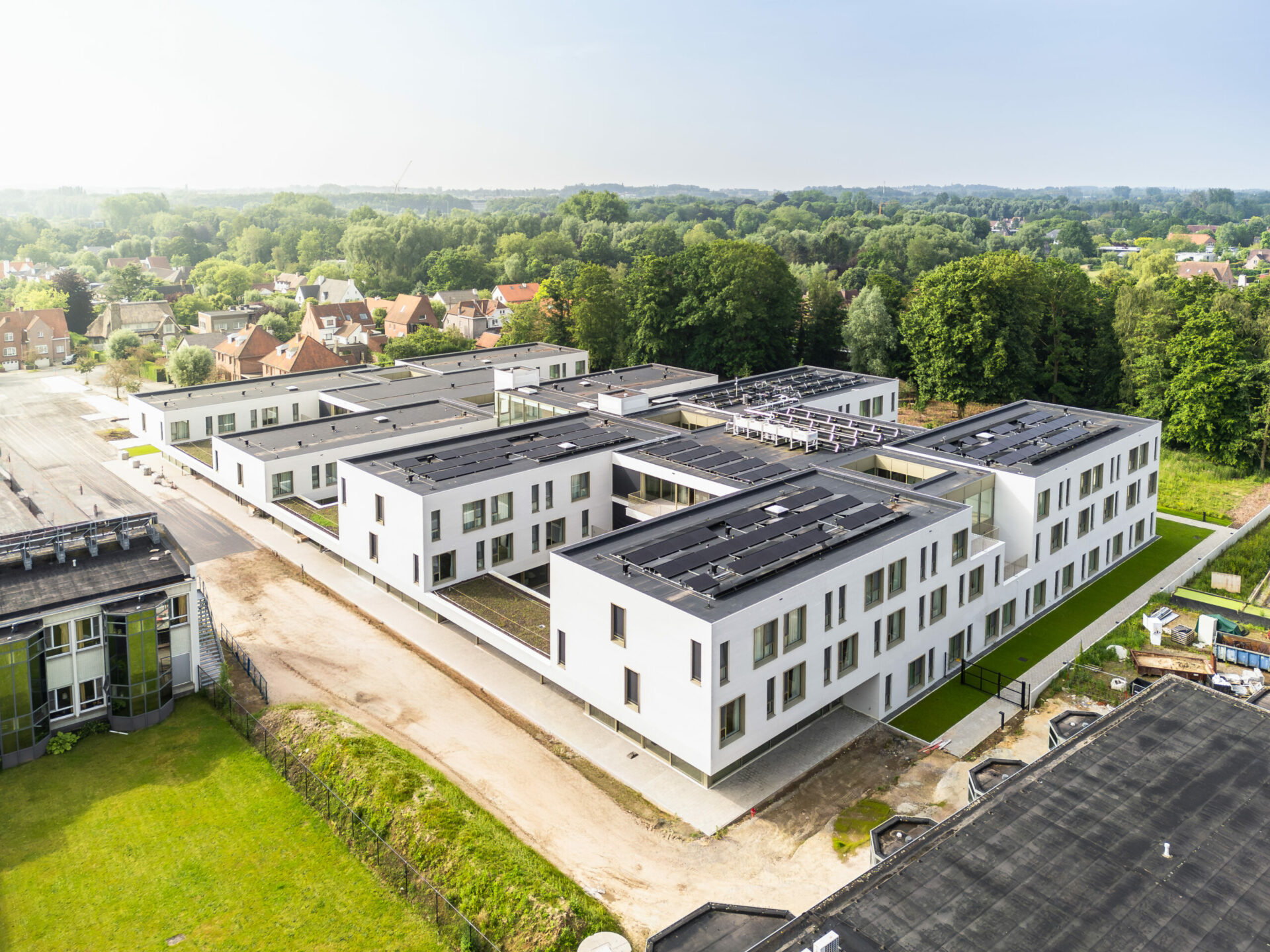
The main entrance is located at the center of the promenade and provides access to the central staircase and elevators for visitors. The nursing home consists of eight distinct building blocks, connected orthogonally, each the size of a “residential house.” These residential houses are positioned perpendicular to the promenade, ensuring that all rooms face east-west. The rhythmic succession of the residential houses (with an open space between them the scale of a large street) creates a contrast between open spaces and built areas.
Living spaces are connected to open areas, each offering an unobstructed view of the surroundings and ensuring transparency throughout the building. Each service of the nursing home consists of two living groups of 16 rooms. Each living unit comprises two houses of 8 rooms, which are clearly defined in the architecture. Even from the outside, they evoke a small scale and a sense of community.
In terms of functionality, maximum friendliness has also been prioritized. There is no central kitchen. Each living unit has its own kitchen where meals are prepared daily. The residential units also include a lounge, a television room, and a reading corner.
The layout of a care unit forms an H shape. In the horizontal part of this H shape, the semi-public functions and services are arranged: the care station, day rooms and dining areas, wellness, the kitchen, and storage rooms. In the two nodes of the H, the volume is perforated by two patios that serve as orientation points and landmarks, providing light and air. The perspectives encourage social interaction and oversight among residents, staff, and visitors, offering spatial references for the residents.
The two vertical sections of the H shape comprise four residences.
Due to their arrangement, these areas are extremely private. The sanitary facilities protrude into the corridor, creating a small entry zone for every two rooms, providing additional privacy.
This concept has several advantages:
• the entire service is centralized from a logistical perspective
• the care station is located at the center, which reduces walking distances
• thanks to the central location of the various day rooms, if a resident’s care plan evolves, they can be transferred to another group if necessary without the need for relocation
• by using the elevator and the monumental central staircase for visitors, access to each care unit is from this central area. Therefore, visitors & logistics do not pass by the rooms
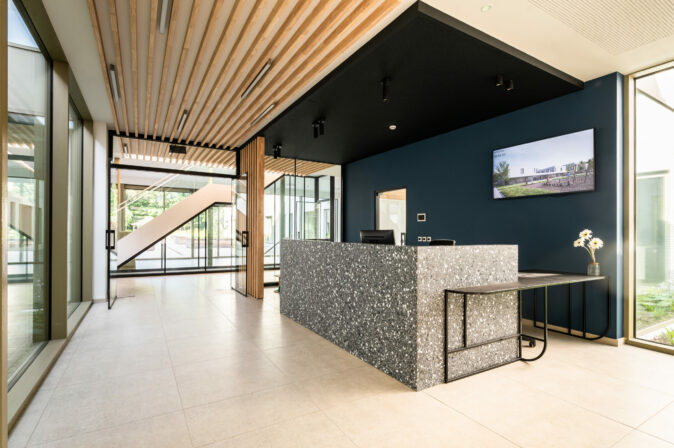
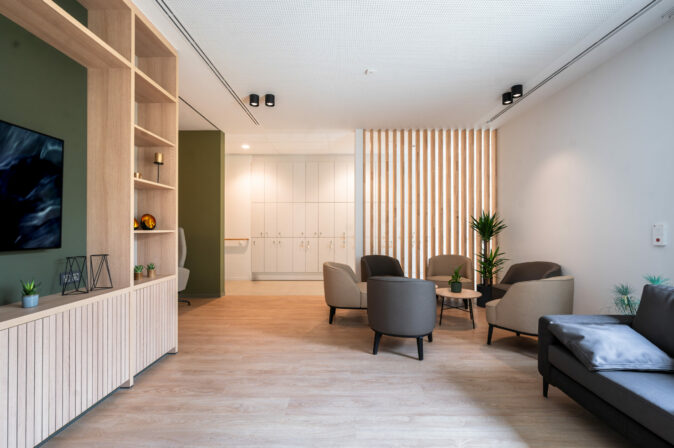
We aimed to avoid the “utilitarian,” almost clinical appearance commonly found in many other nursing homes. In the common areas and circulation zones, we focused on an elegant finish with warm tones, natural materials (wood accents, terrazzo countertops in kitchens, etc.), stylish lighting, and comfortable furniture. We paid attention to detail, right down to the semi-circular wooden handles in the corridor. In this way, a welcoming environment was created that the client can further enhance based on the needs and personal preferences of the residents.
In the bedrooms, we also sought to avoid an overly clean look and feel as much as possible and aimed to create a hotel-like atmosphere with ample variety and customization options. Since these are spacious and flexible rooms with generous dimensions, residents can choose where and how to place their beds, arrange their own sitting areas, etc. This allows them to freely customize their living and sleeping spaces without sacrificing comfort and necessary amenities.
‘t Huis Kortrijk is 100% synonymous with standardized small-scale living. This means that the living environment is designed to create a family-like atmosphere where residents feel safe and comfortable. By emphasizing small living groups and an intimate environment, the focus is on the well-being of the residents.
The new building of the MRS ‘t Huis will include eight living groups. These small groups live at a domestic pace in a friendly atmosphere, with their own kitchen and living space, and can accommodate individuals based on their care needs, such as residents with dementia.
But there are other advantages as well. This approach helps to prevent the spread of viruses and allows for quicker control over outbreaks. This was indeed the starting point from the very beginning of the project (the first decision by the OCMW council dates back to 2014). We are even more convinced of this today due to the COVID-19 crisis.
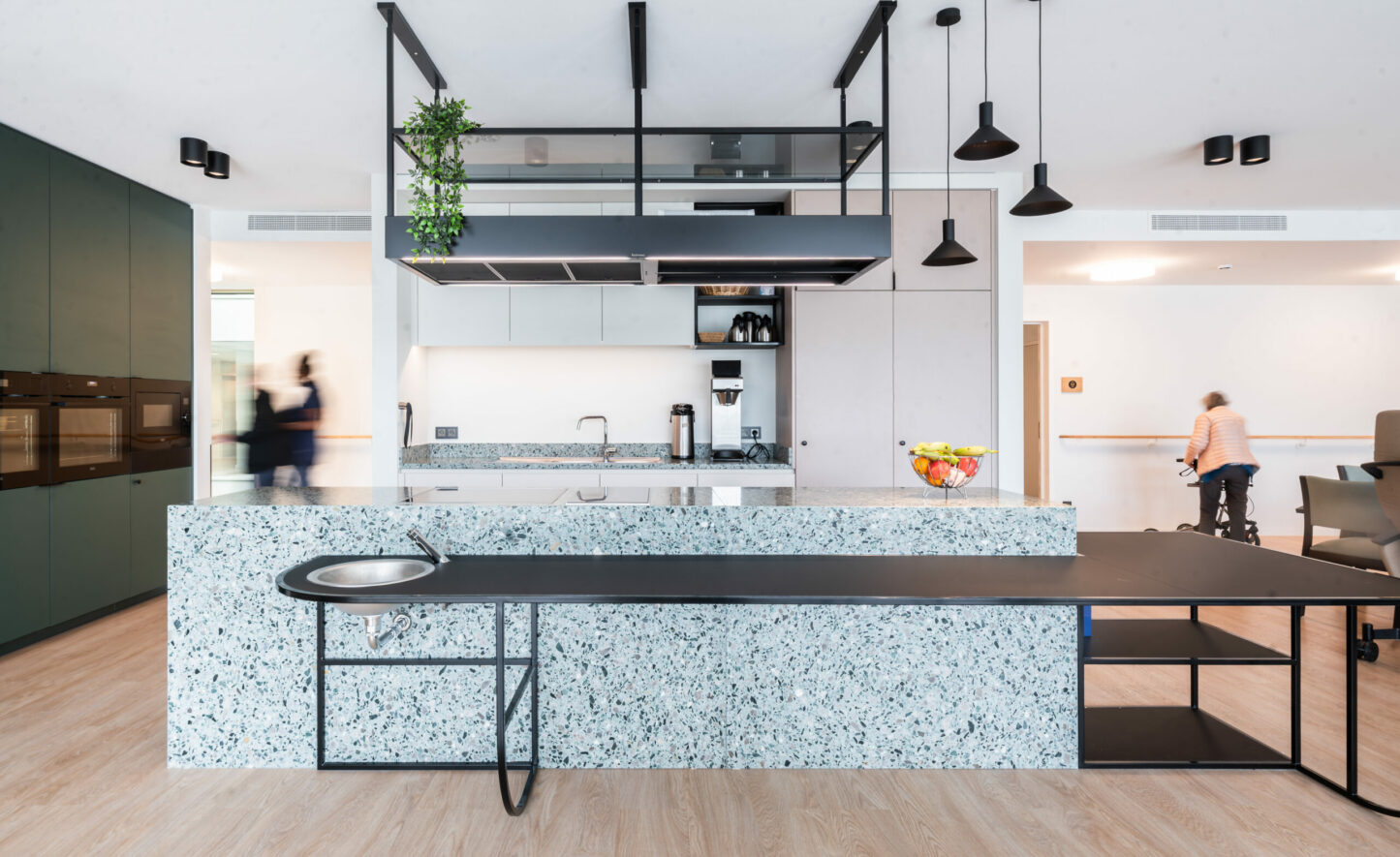
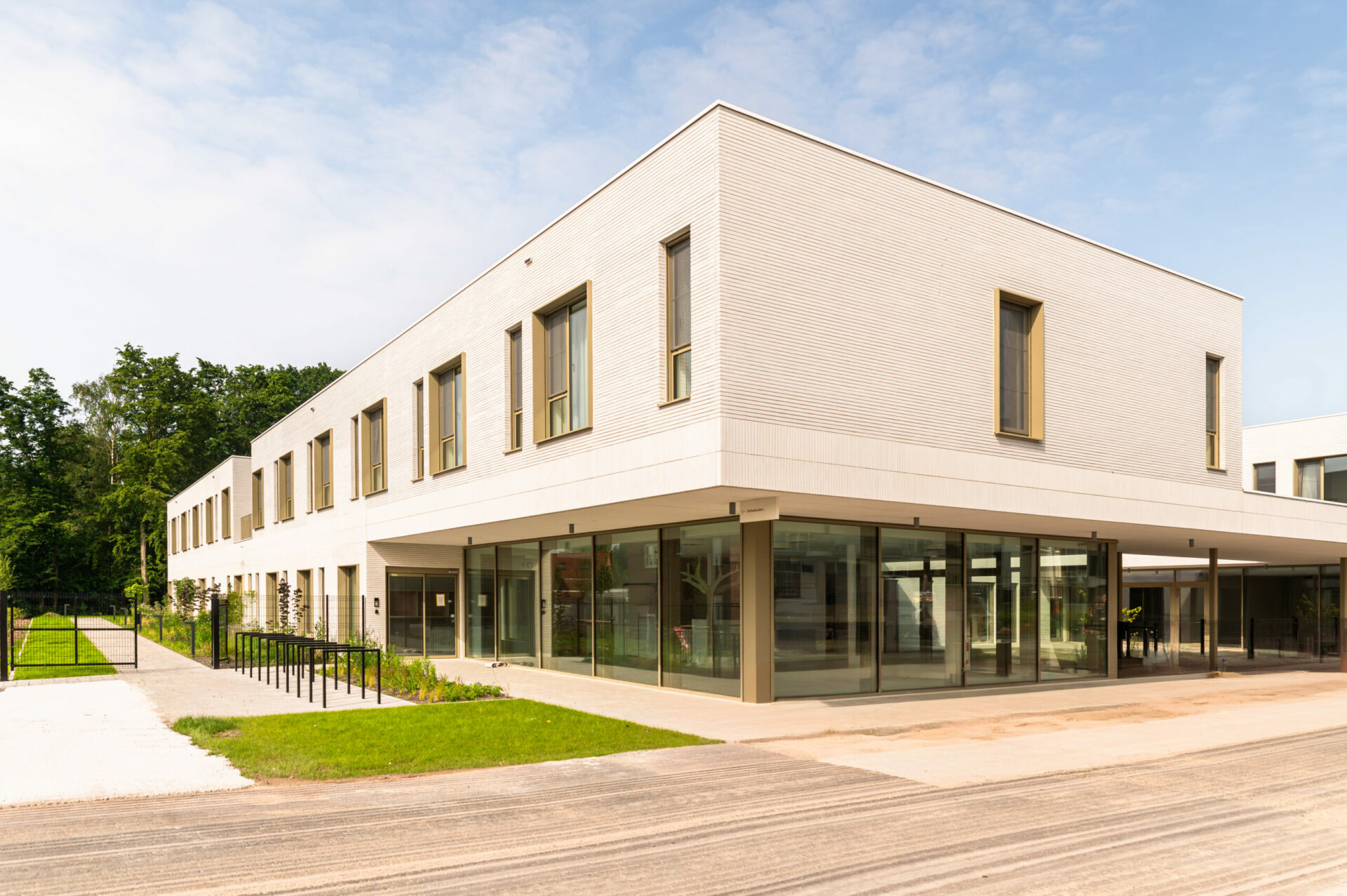
A broad target group and customer experience are essential pillars.
The residential care center is not autonomous but is part of a larger care campus. At the front, the building features a large canopy that creates a lively promenade and provides access to all the functions of the site.
Indeed, the complex also houses a nursery and foster parents for about a hundred children, a multifunctional room with a bar and storage room (which is part of the local service center), a welcoming cafeteria with a bistro atmosphere, and a day care center.
The residential units of the care center are located behind and above these public areas, ensuring that residents have the privacy they need. After the demolition of the existing nursing home, a public park with a playground will take its place, which we hope will become an attraction for people from outside. This way, the barrier to visiting nursing home residents will be much smaller, and the classic negative connotation of “nursing home” will no longer apply.
The pleasant small scale is present throughout, even though, in terms of surface area, it is a large building housing many functions.
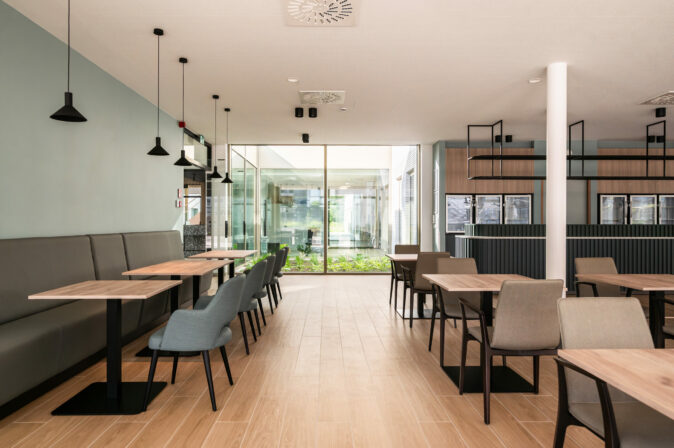
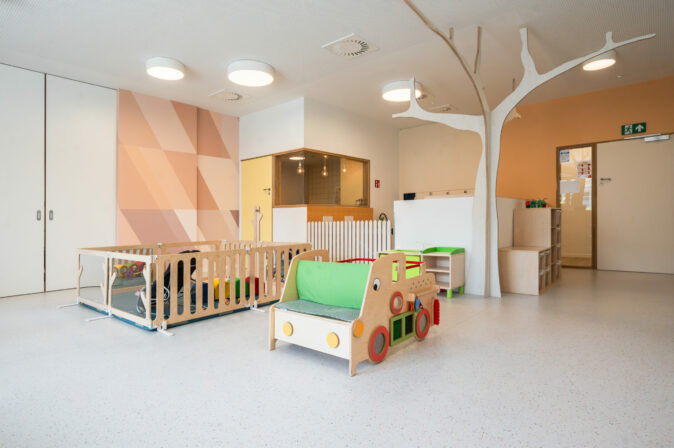
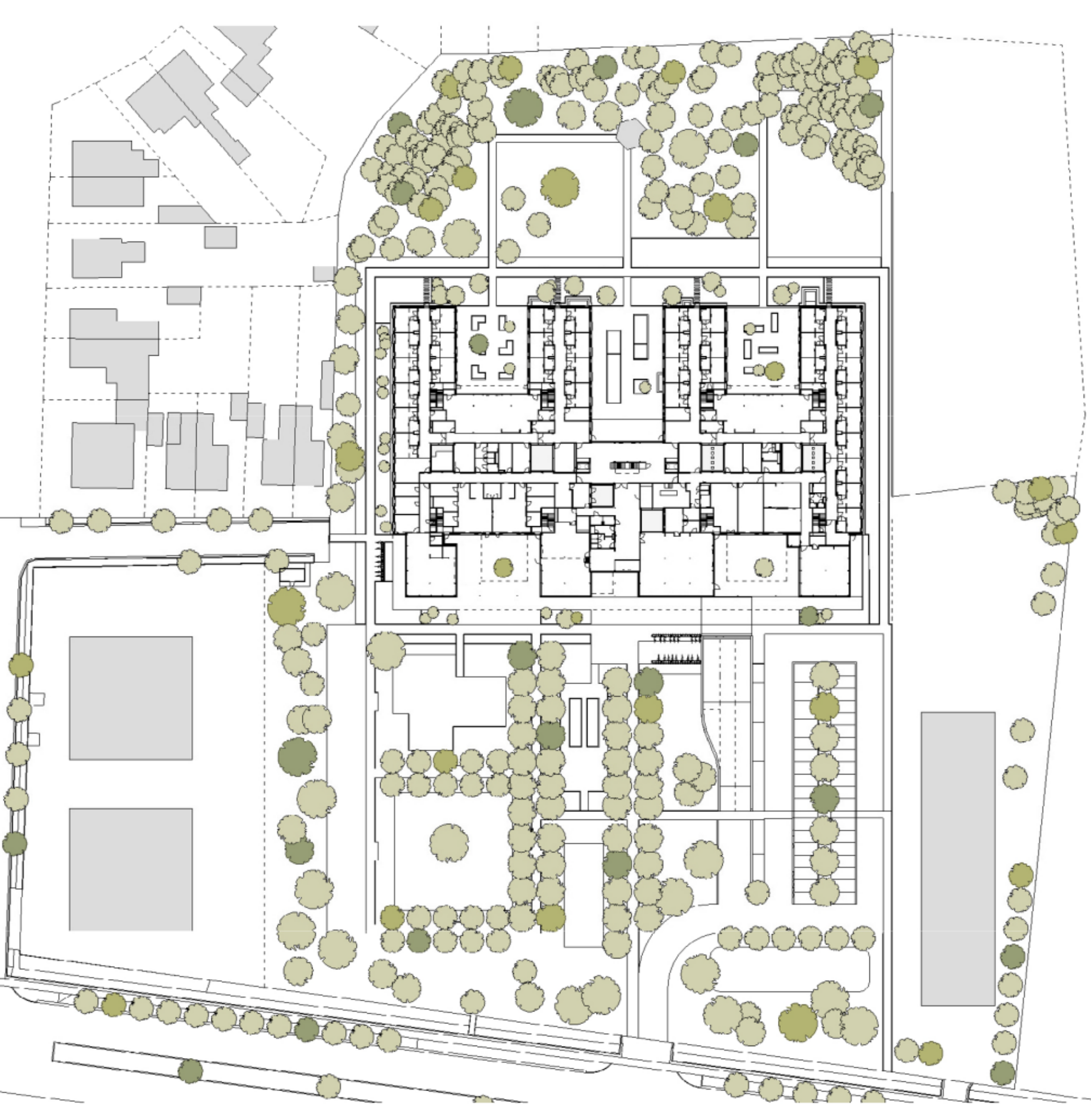
new implementation
Sustainability and Total Cost of Ownership are at the heart of the project. ‘t Huis aims for an infrastructure that not only meets current standards but is also future-proof in terms of energy efficiency and environmental respect. By using sustainable materials and innovative technologies, the goal is to achieve the lowest possible Total Cost of Ownership throughout the building’s lifecycle.
The MRS ‘t Huis embraces sustainability at multiple levels, bringing several advantages:

The building, techniques, and environment have all been fully developed within a BIM model. From the design competition in 2014, the client intended to develop a BIM model that would also be usable after completion, specifically for operations and maintenance. Thus, it had to be user-friendly for collaboration between the architect and the engineering office, and quick and efficient for use by the technical maintenance staff of Zorg Kortrijk. This led to the choice of LOD 300: geometrically accurate, but without excessive 3D visual details and technical data. Instead of including the latter in the model, all BIM objects are logically numbered and linked to a web link that leads directly to the corresponding technical data sheet.
From the design process onward, the client began to reap the benefits of intensive BIM use. The director and project manager of the CPAS of Kortrijk were invited to our virtual reality room in Brussels, where they could freely navigate the 3D model using virtual reality goggles. This was particularly decisive for the choice of window frame colors.
In 2020, assar organized a large-scale electronic procurement pilot project based on BIM: the tender for the new care campus ‘t Huis in Kortrijk.
Once the design was complete, we provided a 3D model for the first time as part of a tender, in the form of an IFC file. Bidders were allowed to use the 3D model to verify certain aspects and measurements, but it was agreed that the original plans, measurement reports, and specifications would remain the starting point.
With nine bidders and an award meeting technical and financial expectations, the procedure was a success.
Moreover, during a post-procedure evaluation, a significant majority of the participating contractors indicated that the BIM approach had enabled them to better understand the project and prepare more efficient and accurate quotes. Several bidders even requested that BIM play an even more central role in future procedures.
Now that the new building is complete and the operational and maintenance phase has begun, it is important that the BIM model is kept up to date in the future as well. This must be done based on the logical numbering we previously agreed upon with the client, so that all data and details remain accurate. Of course, this requires qualified technical staff capable of making adjustments in Revit themselves if necessary. Fortunately for the city of Kortrijk, this is not a problem, and this project is hopefully a model for the future management of the city’s built heritage.
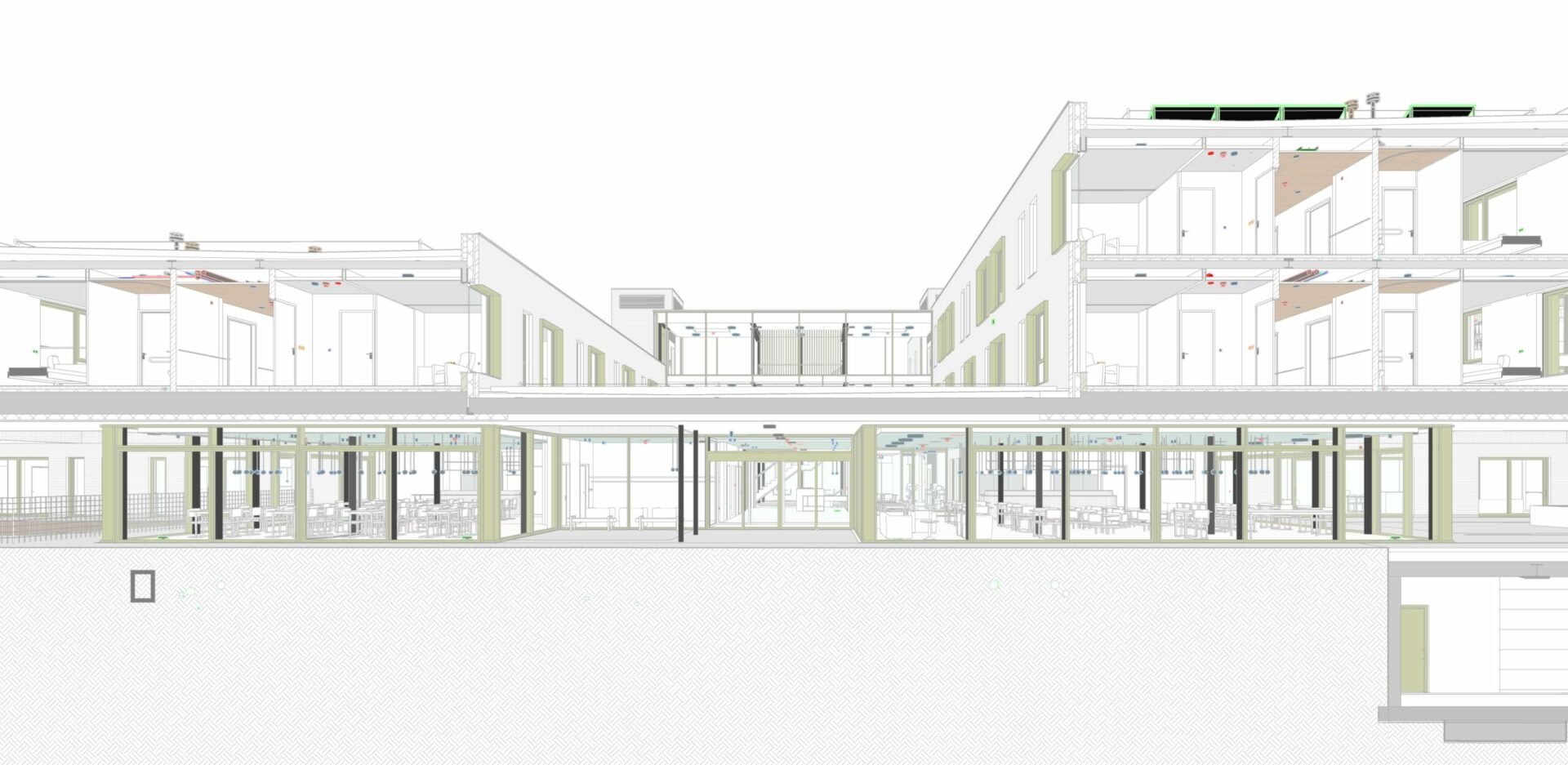
BIM model – architecture
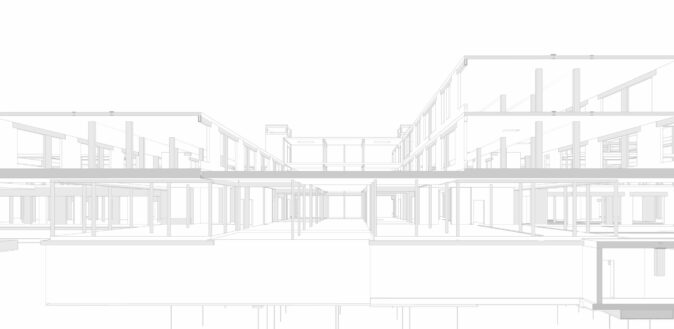
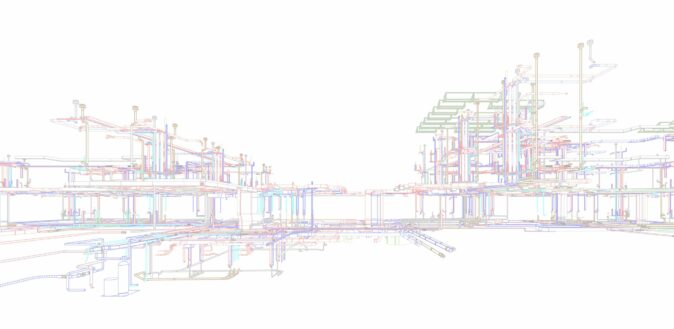
BIM model – structure BIM model – techniques
• BEN
